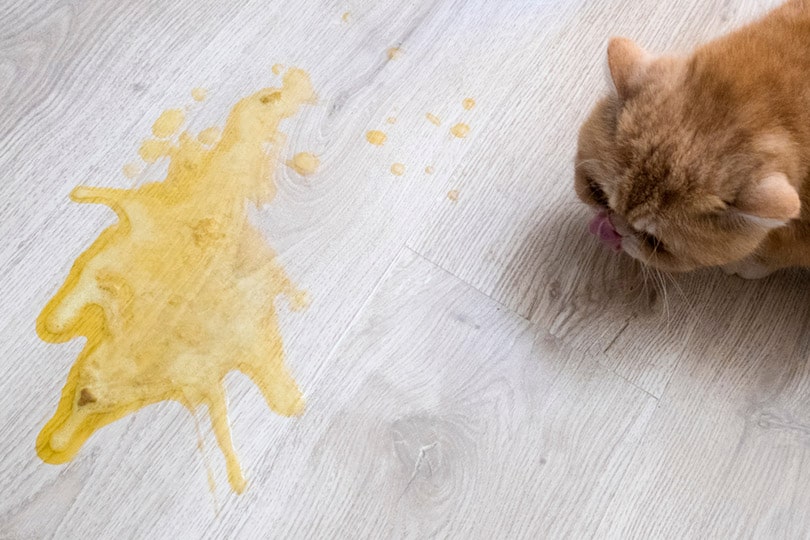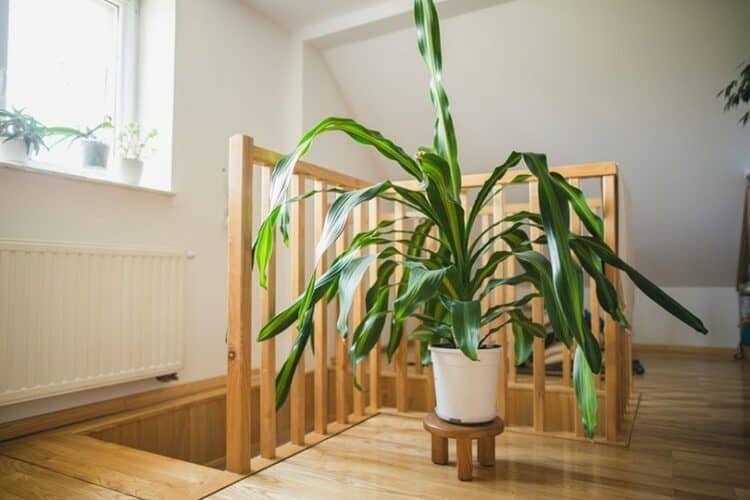House plants can make your living space feel cozy, but some species are not safe to have around your pets. If you have a feline roommate, you must be aware of poisonous plants like the dracaena. It’s often called a “corn plant” in the U.S. The dracaena is often confused with maize, the vegetable plant.)
It is a medical emergency if your kitty eats a corn plant, but you can read on to learn how to handle the situation.
What to Do If Your Kitty Eats a Corn Plant (Dracaena)
Do your best to stay calm if your cat eats a corn plant (dracaena). Your kitty needs you to be level-headed and take quick action.
- First, remove any corn plant pieces from your cat’s fur and, if possible, their mouth.
- Then place your cat in a secure area so you can monitor them. You don’t want them to run off. A room with tile flooring, like the bathroom, works well because they may vomit.
- Get a pen and paper. You’ll want to write down any instructions your veterinarian gives you.
- Call your veterinarian or animal hospital for further instructions.
- If your cat pukes up plant pieces, place the vomit in a plastic bag or clean container. Your veterinarian may need to analyze it.
Signs Your Cat Ate a Toxic Plant
Felines are known for being quiet and sneaky, and your cat might nibble on a toxic plant without you knowing about it. Also, some plants that are placed out of your pet’s reach could still drop petals or leaves on the floor that could be consumed later. Cats that ingest a poisonous plant may exhibit these signs:
- Drooling
- Difficulty swallowing food or water
- Trouble breathing
- Vomiting
- Diarrhea
- Lethargy
Call your veterinarian ASAP if you suspect your kitty ate something toxic.

What Are Safe House Plants for Cats?
Felines and plants can coexist; it just takes a little planning. The ASPCA has a massive list of toxic and non-toxic plants for cats.
Bamboo is a safe houseplant option for cats and dogs, but that doesn’t mean your kitty can enjoy a bamboo buffet. Plants that aren’t toxic can still cause an upset stomach, and your kitty may vomit or have diarrhea after eating bamboo or another non-toxic plant.
Could a Cat Survive on Plants?
Domestic house cats are drawn to plants but can’t survive on them. Cats are strict or “obligate” carnovores. Their bodies are designed to digest meat, and your cat would quickly become ill if they passed over meat-heavy meals for an entirely plant-based diet.
Why do cats eat plants, then? This behavior could be instinctual, as wild cats like lions will eat plants, too. Another theory is that cats with an upset stomach will eat plants to induce vomiting. And yet another possibility is that while cats need meat in some form to survive, they get trace minerals from plants. However, we don’t have a definitive answer. Why your house cat eats grass or other plants remains a mystery.
Final Thoughts
The dracaena, a houseplant commonly called a “corn plant,” is toxic to cats. You should avoid having a corn plant in your house if you have a pet cat. If your kitty eats a corn plant, contact your veterinarian as soon as possible. Domestic cats nibble on plants for reasons we don’t fully understand. Even non-toxic plants like bamboo can cause vomiting and diarrhea, and any troubling symptoms that your pet displays warrant a trip to the doctor.
Featured Image Credit: Shutterstock
















